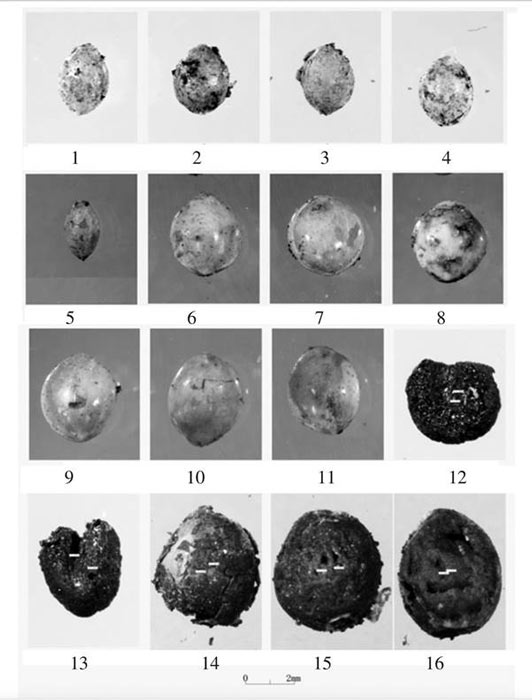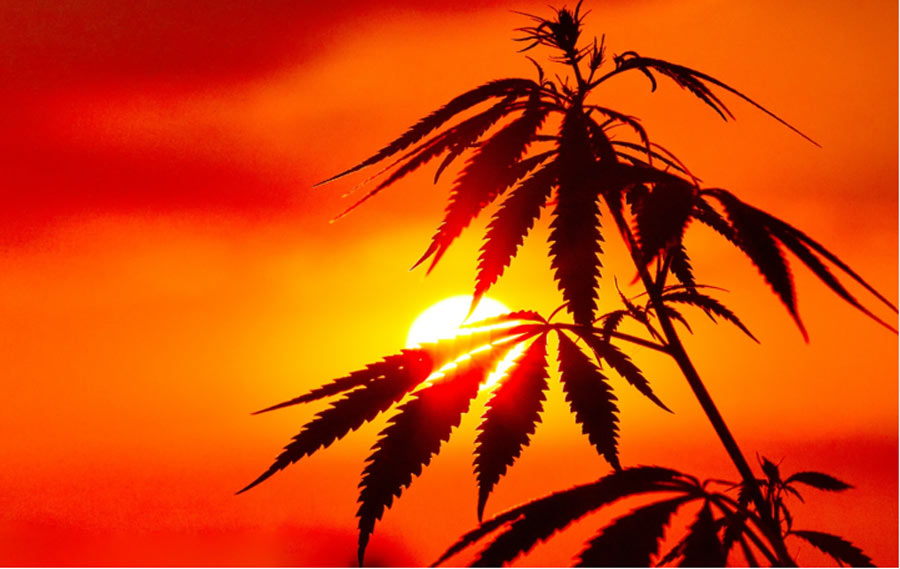Evidence Of Cannabis Consumption Found In Tang Warrior’s Tomb
Archaeologists in China have discovered a 1,300-year-old tomb containing big cannabis seeds that are unlike any of today’s strains. A new study has revealed that cannabis in China was not only grown for making clothes, sails, and oil, but that it was also consumed for its medical benefits.
The 1,320-year-old Tang dynasty tomb was discovered in 2019 during building works at a primary school in Taiyuan, Shanxi province. According to the new research paper, the tomb contained the remains of a cavalry captain named Guo Xing, who had fought with Tang emperor Li Shimin (Taixzong) “in a series of bloody battles on the Korean peninsula.”
Described as an “unusually dry” burial vault, decorated with colorful wall paintings, the archaeologists discovered heaps of grave goods and burial artifacts. Inside a well-preserved clay jar, that had been placed on the top of the man’s coffin, the team of researchers discovered “larger than normal” cannabis seeds. Cannabis in China has the longest history in the world, and it was long used to get high while the seeds were eaten in large quantities for their nutritional benefits.

The latest evidence of cannabis in China was found in a Tang-dynasty warriors tomb, where these wall paintings were also found. (Taiyuan Municipal Institute of Cultural Relics and Archaeology / South China Morning Post)
Cannabis in China: Huge Seeds And Genetically Different
So good were the preservation qualities of this ancient tomb that when the scientists looked at the cannabis seeds through a microscope they found some still had their original colors. Professor Jin Guiyun of the school of history and culture at Shandong University is the author of a new peer-reviewed paper that was published last month in the journal Agricultural Archaeology. The study says the ancient seeds were nearly “twice as big as normal,” which means they were genetically different from today’s cannabis strains.
- A Versatile Plant: What Were the Many Uses of Cannabis in Ancient Egypt?
- Archaeologists Are Surprised to Find a 2,500-Year-Old Cannabis Burial Shroud Found in China
Human beings have complex endocannabinoid systems (ECS) for a reason. Our bodies have developed the ability to metabolize cannabinoids, the naturally occurring chemical compounds from cannabis plants. While THC and CBD are commercially famous cannabinoids there are over 100 different types, which all affect the human body differently. The ECS regulates emotional processing, sleep, memory, pain control, inflammatory and immune responses, and this is why cannabis is being legalized across the planet. And so well observed were these health benefits in ancient Chinese that texts record wu gu (cannabis) being one of the five “staple food crops.”

Cannabis landraces in Qinghai province, China have been determined as the forerunners of cannabis domestication. A landrace refers to domesticated, locally adapted, traditional variety of a species of animal or plant that has developed over time. (Guangpeng Ren / Science Advances journal)
12,000 Years Of Cannabis In China
The new study says cannabis was first domesticated in China 12,000 years ago. By 6,600 BC, the plant was being ingested in high doses to induce hallucinations in rituals and ceremonies. The researchers of the newly discovered tomb wrote that the seeds were from the Cannabis sativa family of plants which originated in Central Asia. These plants generally have uplifting and energizing effects compared with Cannabis indica, from India, which creates a relaxed “couch locked” feeling.
The Chinese cannabis seeds were stored in a clay pot that was positioned on top of the warrior’s coffin with other grains, including millet. This means the man’s family regarded cannabis seeds as an essential food in his journey into the afterlife.
An article in South China Morning Post says ancient Chinese people “cultivated and also consumed cannabis seeds in a kind of porridge.” Consuming cannabis seeds offers many nutritional benefits but without any of the psychoactive effects. If any of you out there are still questioning the health benefits of consuming cannabis, the Guo family soldier “died aged 90” according to the report.

Cannabis seeds found at the tomb with their husks. (Taiyuan Municipal Institute of Archaeology/SCMP)
Careful, Not Everything Adds Up In This New Study
It is quite worrying that the cannabis in China paper is a peer-reviewed paper, because its conclusions are built on the incorrect assumption that cannabis seeds can “stimulate the nerves and cause hallucinations.” This is not the case, and no matter how much cannabis seed one consumes, there will be no stimulation whatsoever.
- Ancient Judahites Performed Cannabis Ceremonies on the “High-Way” to Yahweh
- Research Traces Cannabis Plant Origins to the Tibetan Plateau 28 Million Years Ago
Cannabis cultivators understand that THC production in a cannabis plant is a long and complex almost alchemical process, with THC strength being amplified depending on the growers control of N, P, and K (nitrogen, phosphorus and potassium). There is no THC in a cannabis seed husk. It only forms in the heads of mature flowers. A Healthline article makes this very clear saying “marijuana seeds aren’t going to get you high no matter how many you crush and smoke. There’s just not enough THC in the seeds to produce any effects.”
Why the Chinese scientists added this blatantly incorrect sentence is beyond me. Maybe they were smoking something?
Top image: Cannabis in China has a long history, the longest in the world, and its flowers and seeds were used for stimulation and nutrition, respectively. Source: Aleksandr / Adobe Stock
By Ashley Cowie


















Comments
A fascinating article. So, cannabis has been around in China for over 12,000 years. It’s likely it’s been around for much, much longer. Shamans from around the world used it to help with medical problems and for other religious ceremonies. It’s an important and useful plant and needs to be studied more for its plentitude of medical benefits.